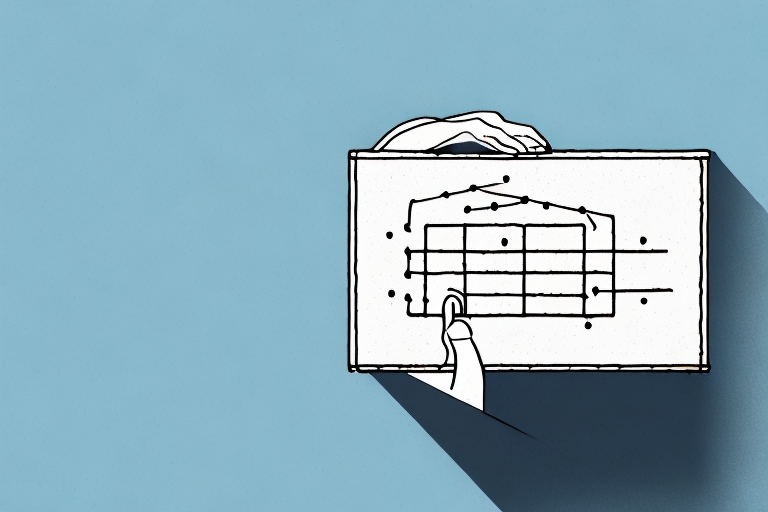How to Write the Dimensions of a Box: A Step-by-Step Guide
Accurate measurement and labeling of box dimensions are essential for efficient shipping, storage, and inventory management. Properly sized boxes not only ensure your goods fit securely, minimizing the risk of damage during transit, but also help in selecting the most cost-effective shipping options. This comprehensive guide will walk you through the process of measuring and recording box dimensions accurately.
Importance of Accurate Box Measurements
Cost Implications in Shipping
Shipping costs are often calculated based on the dimensions and weight of a package. Incorrect measurements can lead to overpaying for shipping or incurring additional fees from carriers. According to the United States Postal Service, dimensional weight pricing may apply when the package size exceeds the carrier's standard measurements, making accurate dimensions crucial for cost management.
Safe Handling and Damage Prevention
Properly measured boxes ensure that products fit snugly, reducing movement within the box and the likelihood of damage. The Consumer Product Safety Commission emphasizes that well-packed items are less susceptible to damage during handling and transportation.
Inventory and Storage Optimization
Accurate box dimensions aid in optimizing storage space. By knowing the exact size of your boxes, you can efficiently arrange them in warehouses or storage areas, preventing clutter and maximizing space usage. This is supported by studies from the Warehouse Logistics Association, which highlight the importance of space optimization in inventory management.
Compliance with Shipping Regulations
Different carriers have specific size restrictions for packages. Accurate measurements help ensure compliance with these regulations, avoiding shipment rejections or delays. For detailed guidelines, refer to the FedEx Shipping Guidelines.
Tools and Materials Needed
To measure box dimensions accurately, gather the following materials:
- Measuring Tape or Ruler: Ensure it measures in both inches and centimeters for international shipping.
- Pen or Pencil: For recording measurements.
- Paper: To jot down the dimensions.
- Level Surface: A flat, stable surface ensures consistent measurements.
- Protractor or Angle Finder: Useful for boxes with irregular shapes.
Step-by-Step Guide to Measuring Box Dimensions
Measuring the Length
Place the box on a level surface. Align the measuring tape along the longest side of the box, ensuring it's straight and taut. Record the measurement in both inches and centimeters.
Measuring the Width
Measure the box's width by aligning the tape across the shorter side, perpendicular to the length. Take note of any protruding parts like handles or flaps, as they should be included in the overall width.
Measuring the Height
Measure the height from the bottom to the top of the box. If the box has a lid or cover, include it in the measurement for total height accuracy.
Recording and Labeling Measurements Accurately
Document the measurements in the order of length x width x height, noting both inches and centimeters. For clarity, label each dimension with its corresponding measurement purpose, such as "storage shelf" or "shipping pallet." Consistent recording practices prevent confusion, especially in team environments.
Common Mistakes and How to Avoid Them
- Using Flexible Tapes for Large Boxes: Flexible tapes can sag, leading to inaccurate measurements. Use rigid rulers for larger boxes.
- Mismatching Units: Always double-check whether you're using inches or centimeters to avoid calculation errors.
- Measuring Inner Dimensions: Always measure the outer dimensions of the box to account for any additional space occupied by packaging materials.
- Not Accounting for Irregular Shapes: Use angle finders or protractors for boxes with non-standard shapes to ensure accuracy.
Optimizing Shipping and Packaging with Accurate Measurements
Choosing Appropriate Shipping Options
Accurate box dimensions allow you to select the most cost-effective shipping method. Compare rates from different carriers using your box's length, width, and height to find the best fit for your budget and delivery needs.
Packing Tips Based on Dimensions
Use the box dimensions to determine the amount and type of packing materials needed. Properly sized packing materials like bubble wrap or packing peanuts can protect items and fill empty spaces, preventing movement during transit.
Customizing Boxes for Efficiency
For unique items, consider customizing box sizes to match the exact dimensions of your products. This minimizes wasted space and reduces the need for excessive packing materials, leading to cost savings and environmental benefits.
Technological Innovations in Measuring Box Dimensions
Advancements in technology have streamlined the process of measuring box dimensions. Tools such as digital measuring devices and smartphone apps utilize camera measurements and augmented reality to provide quick and accurate dimensions. Software solutions offered by carriers can automatically calculate shipping costs based on the entered dimensions, simplifying the shipping process.
Environmental Benefits of Accurate Box Measurements
By using boxes that fit their contents perfectly, businesses can reduce the amount of packaging material required, leading to less waste. This not only cuts costs but also contributes to environmental sustainability by minimizing the carbon footprint associated with excess packaging.
Best Practices for Storing and Maintaining Boxes
Proper storage prolongs the life of your boxes, ensuring they remain in good condition for future use. Stack boxes of similar dimensions together to maximize space and prevent deformation. Store boxes in a cool, dry place to avoid moisture damage, and periodically inspect stored boxes to ensure they retain their shape and size.
Conclusion
Accurately measuring and recording box dimensions is a fundamental aspect of efficient shipping and storage. By following this step-by-step guide and avoiding common pitfalls, you can ensure that your packaging meets both your logistical and budgetary needs. Incorporating technological tools and adhering to best practices further enhances accuracy and sustainability in your packaging processes. Happy shipping!




















